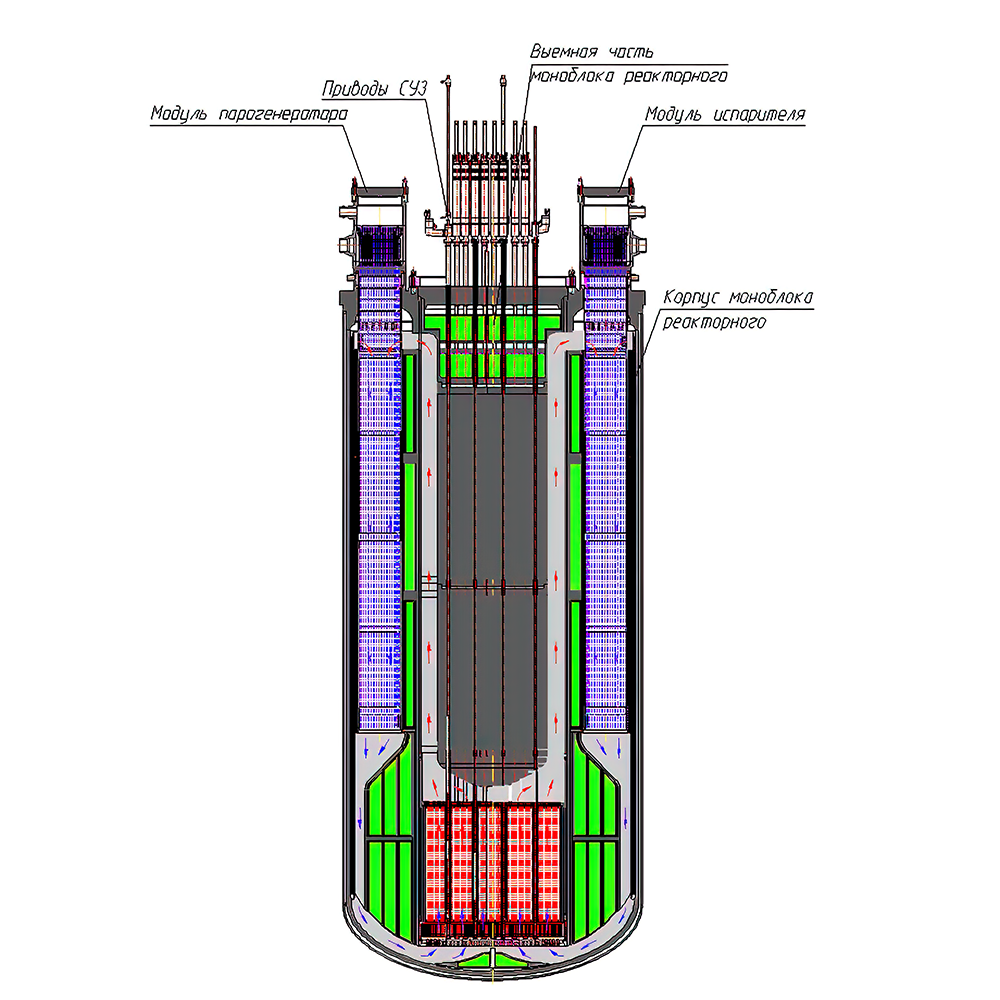OKB Gidropress, a major Russian design Bureau, is developing a fast neutron 10MWe Generation 4 microreactor, SVET-M, for small NPPs. Sergei Lyakishev, Head of the Department Fast Neutron Reactor Installations at Gidropress, said this is a completely new project. At the beginning of 2021, Viktor Dzhangobegov, General Director of Gidropress, gave orders for development of a natural circulation facility. Specialists are developing variants of SVET-M reactor plants with a range of electrical power, from 1MWe to 50MWe. The design which is the furthest advanced is for 10MWe.
The scientists chose a standard turbine from a thermal power plant which can produce either 10MWe, or 8MW of electricity plus heat for a small settlement. The height of the reactor is about 5 metres and it can be delivered to the site by almost any type of transport.
The liquid metal coolant is a eutectic alloy of lead and bismuth. A monoblock design was selected, with both the core and steam generators located in the same building. Water enters the housing, and leaves as superheated steam. The main feature of the reactor is that it operates on natural circulation, there are no pumps in the primary circuit. The containment is not pressurised and it has a completely passive core cooling system. The lead-bismuth alloy is located in the reactor vessel at atmospheric pressure; it does not chemically interact with either air or water.
With a long fuel cycle, the issues of reliability of moving elements in a molten solution of lead with bismuth – an aggressive environment – have to be considered. With natural circulation, there is no need to carry out serious, long-term and expensive activities to substantiate materials. Gidropress has, in fact, developed a magneto-hydrodynamic pump that could be used for circulating the coolant, which has no moving parts. However, such pumps have not yet been used in operating reactor plants, and their service life has not been confirmed, so natural circulation was the choice.
The service life of the plant will be 50 years with a 15-20 year refuelling cycle the core is low stress. The SVET-M fast neutron reactor and has a fairly high fuel breeding ratio.
Lyakishev said in December that a preliminary design had been completed – a basic one, “since we were limited for time”. It did not include secondary systems and equipment, such as passive heat removal, of emergency discharge of the steam-water mixture into vessels. “Now we are completing work on transitional regimes related to ensuring safety so that, with a complete blackout for 72 hours, the temperature of the fuel cladding will not exceed the specified values.”
He added: “In 2023, we will apply to Rosatom for financing for the necessary R&D. We are awaiting an investment decision. We expect to carry out R&D from 2024 to 2026. A three-year plan has been prepared, within the framework not just a reactor plant, but of a low-power NPP.”
